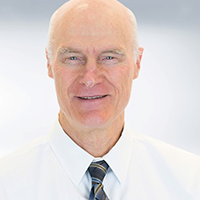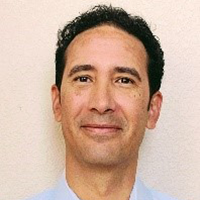New Multi-Period Response Spectra and Ground Motion Requirements, Additional Revisions to Ground-Motion Provisions, and Dissection of Example Changes to the MCER Ground Motion Values
Jun 2, 2022 | 1:00 PM – 2:30 PM ET
Virtual Meeting
New Multi-Period Response Spectra and Ground Motion Requirements
This presentation summarizes a comprehensive set of new multi-period response spectra (MPRS) and related ground motion requirements of the 2020 edition of the NEHRP Recommended Provisions (and ASCE/SEI 7-22). These changes collectively improve the accuracy of the frequency content of earthquake design ground motions and enhance the reliability of the seismic design parameters derived from these ground motions by defining earthquake design ground motions in terms of MPRS. The new MPRS make better use of the available earth science which has, in general, sufficiently advanced to accurately define spectral response for different site conditions over a broad range of periods. Three new site classes are added to better describe site effects.
The new ground motion requirements eliminate the need for site-specific hazard analysis now required by ASCE/SEI 7-16 for certain (soft soil) sites. The new ground motion requirements directly incorporate site amplification and other site (and source) dependent effects in the design parameters SDS and SD1 (two-thirds of SMS and SM1) eliminating the need for site coefficients. Site-specific values of design parameters (and corresponding MPRS) are (or will be) available online at a USGS web site and presumably at other related web sites (e.g., SEAOC, ASCE and ATC web sites) for user-specified values of site location and site class. Traditional design methods (e.g., ELF procedure) familiar to and commonly used by engineering practitioners for building design remain the same.
Revisions to MCEG PGA, Vertical Component, and Site Class when Vs Data not Available
The introduction of MPRS in the provisions eliminated the need for the site coefficient, FPGA , in Sect. 11.8.3. The USGS Seismic Design Geodatabase now provides the PGAM for the applicable site class, and Table 21.2-1 was added to provide the deterministic lower limit PGAM, which was formerly 0.5 FPGA . Also, the earthquakes to be considered in computing the Deterministic MCEG Peak Ground Acceleration (Sect. 21.5.2) are now obtained from the disaggregation of the Probabilistic MCEG Peak Ground Acceleration. The new vertical (V) component provisions (Sect. 11.9) corrected the geometric mean definition of the horizontal (H) component in the V/H ratio by introducing a correction factor Fmd to account for the direction of maximum shaking. Also, an equation was added to compute the vertical component for vertical periods, Tv > 2 sec, and the vertical coefficient, Cv, was revised to accommodate the additional site classes. Finally, new provisions in Chapter 20 were added to determine the site class when a shear-wave velocity (Vs) survey is not conducted at a site. The procedure involves (1) constructing a Vs profile using correlations between Vs and measured geotechnical parameters, such as SPT and CPT, (2) computing the average Vs in the upper 100 ft (30 m), (3) scaling the by 1.3 and (1/1.3), and (4) determining the most critical site class for values of s, 1.3 ν, and ν s/1.3 at each period, T, i.e., select the site class that results in largest MCER Sa.
Dissection of Example Changes to the MCER Ground Motions Values
This presentation provides examples of the changes to the risk-targeted maximum considered earthquake (MCER) ground motions from ASCE/SEI 7-16 to the 2020 NEHRP Provisions. As documented in the Commentary to Chapter 22 of the latter, the updates to the seismic ground-motion maps stem from recommendations of the BSSC Project ’17 committee and the 2018 USGS National Seismic Hazard Model (NSHM). The Project ’17 recommendations include modifications to the (1) site-class effects, (2) spectral periods defining the SMS and SM1 ground-motion parameters, (3) deterministic caps on the otherwise probabilistic ground motions, and (4) maximum-direction scale factors. The 2018 NSHM updates include incorporation of (1) the NGA-East ground-motion models, (2) deep sedimentary basin effects in the Los Angeles, Seattle, San Francisco, and Salt Lake City regions, (3) earthquakes that occurred in 2013 through 2017, and (4) updated weighting of the western U.S. ground-motion models. At locations in 34 high-risk (i.e., high-hazard and/or high-population) cities, the combined impacts of the Project ’17 and 2018 NSHM modifications on SMS for the default site class are less than 15% at all but 3 of the locations; SM1 changes by less than 15% at 23 of the locations. The corresponding seismic design categories (SDCs) change at 4 of the locations, from SDC D to E. Most of these changes are due to the Project ’17 modifications to site-class effects or deterministic caps, but some are caused by the other Project ’17 and 2018 NSHM updates, particularly the 2018 NSHM incorporation of basin effects. Changes at other locations can be probed using the USGS Seismic Design Web Services.








